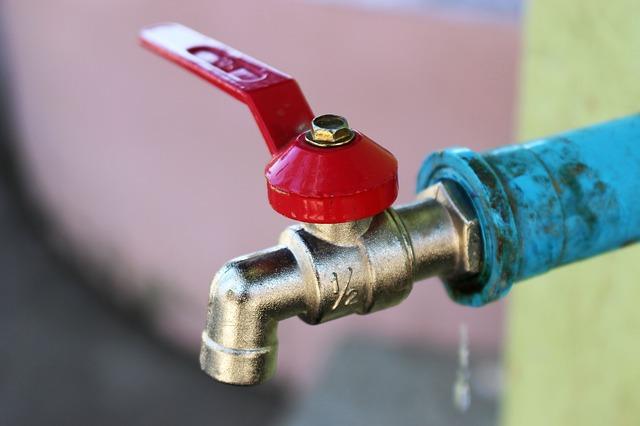
Valves are types of fittings used to regulate, control, and direct fluids passing through a pipe. A shut off valve is a mechanism that stops the flow of fluid to a pipe once activated.
The plumbing system of your home has various shut off valves along the water pipes that allow you to turn the pipes off. This comes in handy in times of emergency or when repair or upgrade is being carried out.
The valves in your plumbing system vary in size, shape, and function. There are different valves in the system ranging from the valve near the water meter (from which water first enters the home) to the small individual shut off valves located just before the water pipes deliver water to the faucets or other appliances.
Shut off valves are used to supply fluids to the kitchen and bathroom fixtures, dishwashers, and refrigerators.
In this article, you’ll learn all you need to know about the best types of toilet shut off valves out there.
Shut Off Valve Operation
A shut off valve/stop valve consists of the handle that controls the valve’s water flow, a water pipe inlet connection in the rear of the valve, and a smaller water outlet connection on the top/side of the valve.
Generally, shut off valves operate in two ways. They are:
-
Ball Valve Type
This operates from the off to on position in a ¼ turn. It is the highest quality shut off valve.
-
Compression Shut off Valve Type
This operates from the off to on position with multiple turns and a compression washer is used to control the flow of water through it.
Water Supply Line Options that Affect the Type of Valve You Purchase
Choosing the right water supply line option or plumbing pipe for your shut off valve will go a long way in helping you to effectively have potable water in every part of your home. You won’t have to worry about leakages or plumbing failure.
Image credit: theplumbersbride.com
Below are the best types of water supply lines that you can choose from.
1. Galvanized steel/iron pipe
This pipe is ideal for indoor and outdoor water supply installation. It is very durable and has a zinc coating that helps to protect it from rust, water corrosion, or external elements like moisture. This makes it a good choice for potable water.
Aside from water supply, it is also used for gas supply, drainage, and sewer purposes.
2. Copper
This is the most popular and commonly used recyclable water supply line by most homeowners. It is usually used for showers, sinks, toilets, and bathtubs.
Although it is expensive, its durability and ability to be used for HVAC systems and refrigerant lines as well as hot and cold water plumbing works make the price worthwhile.
Another distinctive feature of the copper pipe that makes it the most in-demand water supply line is that the metal does not pose any health hazard—irrespective of the quality of your water.
3. PEX (polyethylene cross-linked pipe)
If you’re looking for a durable and affordable water pipe, you should consider this. PEX is a non-recyclable plastic material that can be used for hot and cold water supply. Its flexibility makes it easy to install through ceilings, walls, crawlspaces, and basements.
It’s color-coded to make installation easier and organized. Blue is for cold water, red is for hot water, and white is for either hot or cold water. This makes it very DIY friendly.
4. CPVC (chlorinated polyvinyl chloride)
Just like PEX, it is a cheap and durable plastic pipe. It is very lightweight and chemicals/corrosion resistant. This makes it safe for your water.
5. PVC (polyvinyl chloride)
This is a non-chlorinated plastic pipe similar to the CPVC. It is cheap, easy to install, durable, lightweight, strong, and resistant to harmful bacteria and corrosion. It is mostly used for pressurized cold water applications like drainage and irrigation.
Toilet Water Shut Off Valves Types
1. Quarter Turn and Multi-Turn Water Stop Valves

Image credit: ydvalves.com
The quarter turn shut off valve turns from 0-90 from the fully-opened position to the fully-closed position. Examples of this type of valve include the ball valve, butterfly valve, plug valve, and spherical valve.
The multi-turn valve, on the other hand, has a linear displacement and is controlled by turning its threaded stem severally. Examples are globe valve, gate valve, fixed cone valve, pinch valve, and needle valve. The difference between these two is obvious in their stem/neck area.
2. Compression Fit Stop Valves

Image credit: homedepot.com
These are used for copper and PEX water supply lines. Buildings with copper wire type use this valve to give room for more compression power and eliminate the need for repairs or maintenance.
It is available in multi-turn and quarter turn variants. The quarter-turn stop valve is more expensive than the multi-turn valve but more reliable and efficient. During installation, a compression nut should be made to fit over the supply line, a copper compression sleeve to slide over the supply line, then compress the sleeve with a compression nut and tighten the nut to the stop valve.
It is relatively easy to install, although, it may require a special tool called a compression sleeve puller. Furthermore, it is made with a plastic stem and compression washers. The stem is turned severally to shut off the water flow. It can be easily replaced when damaged and has the ability to shut off fast.
The valve is quite difficult to repair and is always left in the on position as it gets older. This is because it tends to leak when used to shut the water supply off.
3. Sweat Fitting Stop Valves

Image credit: menards.com
These are designed to be used for a copper water supply line. They are cost-effective, non-removable, and non-leaking – and are mostly used during building or home construction.
They require some skills during installation because, unlike some threaded valves, they must be soldered onto the copper pipe. They require a copper tube cutter, solder, flux, emery cloth sandpaper, and propane touch for installation.
Most homeowners find them difficult to install and hard to remove, especially during repairs or replacement. This is because they have to be unsoldered from the copper water pipes.
Nevertheless, they create a long-lasting connection, sturdy, and permanent solution that professional plumbers use.
4. Push Fit/Push-On Stop Valves

Image credit: lyncar.com
This is the newest technology available for shut off valves. It is easier to install for DIYers. The valve is often used with copper pipe, PEX (cross-linked polyethylene), or CPVC (chlorinated polyvinyl chloride) water supply lines.
With its O-ring mechanical gasket, the intake port is kept watertight while the stainless steel locking teeth helps to prevent the valve from slipping away from the pipe. This type of valve is so good that it currently has no downsides.
5. Barbed Fitting Stop Valve

Image credit: sharkbite.com
These valves offer creative solutions for laboratory, water, beverage, and agricultural markets. They have a corrosive-resistant and lead-free design that makes them ideal for water filtration units, coffee, beverage machines, and so on.
The valves have a self-cleaning ball that minimizes scale build-up. And they’re used with PEX water supply piping.
6. Three-Way Shut Off Valve

Image credit: hilborninjection.com
It is called three-way because it has two outlets and one inlet. The valve is used for difficult piping systems that have a hot and cold water supply system. Its mechanism involves shutting off fluid (water, oil, steam) in one pipe and opening fluid flow in another pipe.
The three-way shut off valve is rarely used for under-sinks and toilets; it is typically used to supply water to both the kitchen sink tap and dishwasher.
You can get it in multiple configurations. But due to its complex configuration process, it might be difficult to install. Therefore, the service of a professional is highly needed during its installation process.
Plastic Toilet Shut-off Valve Types
7. CPVC (Chlorinated Polyvinyl Chloride) Shut-Off Valve

Image credit: firstsupply.com
This valve is installed when a CPVC plastic piping is the water supply line of choice. It is made from a durable plastic material and uses a kind of cement referred to as glue.
It includes an insert glued onto the CVPC pipe, a gasket, and a nut screw. You don’t need special tools for the installation. Hence, you can easily install it if you’re DIY savvy.
8. PEX (Cross-Linked Polyethylene) Stop Valve

Image credit: renodepot.com
This type of plastic valve is usually connected to pipes that have clamp or crimp rings. It's quite cheaper than the copper or brass shut off valves. During installation, ring compression equipment should press the crimp ring against the outside of the pipe while a clamp ring tool should be used to squeeze a side of the ring with a tab.
The PEX valve is of two types, they are:
- PEX clamp shut off valve
This valve type has a ribbed fitting that works specifically with PEX plastic pipes. It is the least expensive option that you can get for PEX plumbing. You can attach it with either a ring or a pinch clamp.
- PEX push-fit shut off valve
It is very easy to install as it can be pushed on to pipes and will lock into position without an external clamp. It requires at least 1 inch of exposed tubing to properly install. You can use it on PEX, copper, CPVC, and so on.
Conclusion
A plumbing system is important in every home. Therefore, it is crucial that you carefully choose the best plumbing materials for your home. This will enable you to make important decisions in times of emergency— whether you choose to install your valves yourself or call a plumber.







Leave a comment
This site is protected by hCaptcha and the hCaptcha Privacy Policy and Terms of Service apply.